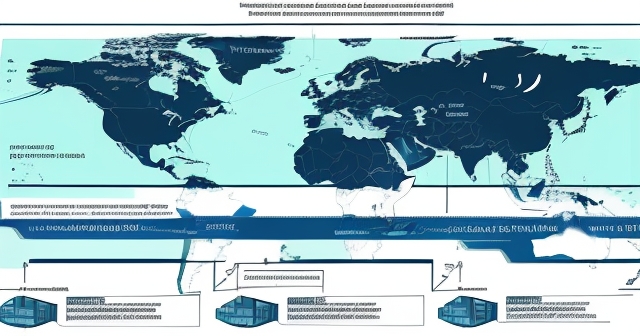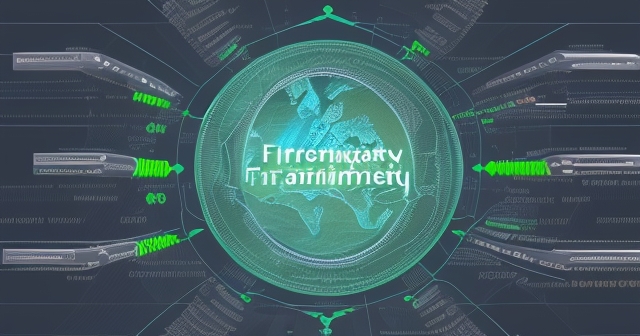The FIMA Repo Facility: Stabilizing Global Dollar Markets from Within the Fed’s Vault
Navigating the complexities of the global financial system can feel like peering into the intricate plumbing of a massive, interconnected city. For investors and traders, particularly those just starting or looking to deepen their understanding, grasping the foundational elements that keep this system running smoothly is paramount. One such element, often operating behind the scenes but vital during periods of stress, is the Federal Reserve’s Foreign and International Monetary Authorities, or FIMA, Repo Facility.
Perhaps you’ve heard of central banks around the world holding vast reserves of U.S. dollars, often in the form of U.S. Treasury securities. This isn’t just a historical quirk; it’s a fundamental aspect of the dollar’s role as the world’s primary reserve currency and the dominant medium for international trade and finance. But what happens when these foreign official institutions need quick access to dollars, perhaps to support their own domestic financial systems or manage exchange rates, without wanting to permanently sell their Treasury holdings?
Enter the FIMA Repo Facility. Think of it as a specialized lending window the Federal Reserve offers specifically to eligible foreign central banks and international monetary authorities. It’s a critical, yet perhaps less-discussed, tool in the Fed’s broader framework for managing dollar liquidity and ensuring financial stability, not just within the United States, but across the globe.
In this deep dive, we’ll explore the FIMA Repo Facility – what it is, how it works, why it was created, and why its existence is important for the smooth functioning of the financial markets you interact with, whether you’re trading stocks, bonds, or currencies.

The U.S. dollar’s unique position in the global economy means that demand for dollars extends far beyond U.S. borders. Foreign banks, corporations, and even central banks rely heavily on the dollar for various purposes, from conducting international trade and settling cross-border payments to maintaining reserves and investing in dollar-denominated assets like U.S. Treasury securities.
This pervasive need creates vast global dollar funding markets, where institutions borrow and lend dollars internationally. These markets are typically efficient, but under stress – such as during a global financial crisis or a pandemic-induced shock – they can seize up. When obtaining dollars becomes difficult or prohibitively expensive in these markets, foreign institutions holding dollar assets, particularly U.S. Treasuries, might be forced to sell those assets rapidly to raise cash.
Why is a rush to sell U.S. Treasuries by foreign holders problematic? U.S. Treasury securities form the bedrock of the global financial system. They are considered among the safest and most liquid assets in the world. Mass, distressed selling can disrupt the U.S. Treasury market itself, leading to price volatility and impaired trading. Given the central role of the Treasury market in pricing a vast array of other financial instruments and its connection to U.S. financial conditions, such disruption can quickly spill over and negatively impact markets *within* the United States.
So, while you might not directly participate in institutional dollar funding markets, the stability of these markets, and specifically the smooth functioning of the U.S. Treasury market, is crucial for the overall health and predictability of the financial system you rely on for your investments and trading activities. This is precisely where tools like the FIMA Repo Facility play a vital role.
One of the critical components of global dollar liquidity includes:
- The reliance of foreign entities on the U.S. dollar for transactions.
- The interdependence of global markets and the U.S. economy.
- The role of treasury securities as a key asset for liquidity management.
| Component | Description |
|---|---|
| Foreign Central Banks | Entities that hold large amounts of U.S. dollar-denominated assets. |
| Dollar Liquidity | Availability of U.S. dollars for various financial operations. |
| Global Trade | International transactions often conducted in U.S. dollars. |
Introducing the FIMA Repo Facility: A Critical Backstop
At its core, the **FIMA Repo Facility** serves as a backstop source of temporary U.S. dollar liquidity for eligible foreign official institutions. Think of ‘backstop’ as a safety net – it’s there to be used when normal market channels are insufficient or under stress.
Its primary goal is twofold:
- Address Pressures in Global Dollar Funding Markets: By providing an alternative source of dollars, the facility aims to alleviate the strains that can emerge in international dollar funding markets, preventing them from escalating and potentially affecting U.S. financial stability.
- Support the Smooth Functioning of Financial Markets: Specifically, it helps eligible foreign institutions avoid distressed sales of their U.S. Treasury securities holdings in the open market during times of stress. This helps maintain order and liquidity in the crucial U.S. Treasury market itself.
Before the FIMA Repo Facility was made a standing tool, the Federal Reserve’s primary method for providing dollar liquidity internationally during crises was through temporary U.S. dollar liquidity swap lines with other central banks. While swap lines remain a critical tool, they are only available to a limited number of central banks with pre-established agreements with the Fed. The FIMA Repo Facility complements swap lines by offering a dollar liquidity option to a much broader set of eligible foreign official institutions, specifically those that hold accounts at the Federal Reserve Bank of New York (FRBNY).
In essence, the facility is a valve designed to release pressure in the global dollar system, preventing that pressure from building to a point that could cause wider market instability, including disruptions to asset prices and funding costs that could impact your investments and trading.
| Step | Action Description |
|---|---|
| Step 1 | The Eligible Institution’s Need for Dollars. |
| Step 2 | Entering the Repo Agreement with the Federal Reserve. |
| Step 3 | The Repurchase Obligation is established. |
The Mechanics of a FIMA Repo: How Treasuries Become Dollars (Temporarily)
How does this facility actually work in practice? The mechanism is based on **repurchase agreements**, commonly known as repos.
A repurchase agreement is essentially a short-term, collateralized loan. In the context of the FIMA Repo Facility:
Step 1: The Eligible Institution’s Need. An eligible foreign central bank or monetary authority needs U.S. dollars quickly but holds U.S. Treasury securities in its account at the FRBNY.
Step 2: Entering the Repo Agreement. The foreign institution agrees to temporarily sell a portion of its U.S. Treasury securities to the Federal Reserve (specifically, to the System Open Market Account, or SOMA, managed by the FRBNY) in exchange for U.S. dollars.
Step 3: The Repurchase Obligation. Crucially, at the same time, the foreign institution agrees to repurchase those same Treasury securities from the Federal Reserve at a slightly higher price on a specified future date.
The difference between the initial sale price and the future repurchase price represents the interest paid on the temporary dollar loan. The term of these repurchase agreements is typically either **overnight** or **seven calendar days**, providing very short-term dollar funding.
This process allows the foreign institution to obtain the dollars it needs using its Treasury holdings as collateral, without having to sell the Treasuries outright in the open market. Once the repurchase date arrives, the institution repays the dollars (plus the agreed-upon interest), and the Treasury securities are returned to its account.
It’s a clean, temporary exchange designed purely for short-term liquidity needs. The U.S. Treasury securities serve as the guarantee for the dollar funds advanced by the Federal Reserve, making it a highly secure transaction for the Fed.
Who Can Access This Lifeline? Eligibility Explained
Not just any foreign entity can walk up to the Federal Reserve and request dollar liquidity through this facility. Eligibility is strictly defined and limited to a specific group of institutions.
Access to the **FIMA Repo Facility** is restricted to official institutions that hold accounts at the **Federal Reserve Bank of New York (FRBNY)**. These are primarily foreign central banks and other foreign monetary authorities. The term “FIMA” itself stands for “Foreign and International Monetary Authorities,” directly referencing this client base.
Maintaining a FIMA account at the FRBNY is a prerequisite. However, simply having an account is not enough to automatically gain access to the repo facility. Eligible institutions must also apply and receive specific approval from the Federal Reserve to participate in the FIMA Repo Facility operations.
This eligibility framework ensures that the facility serves its intended purpose: supporting the liquidity needs of official sector entities responsible for financial stability in their own jurisdictions, which in turn helps bolster global financial stability connected to the U.S. dollar system. It is not a facility available to foreign commercial banks, corporations, or individual investors.
The approval process likely involves assessing the institution’s official status and ensuring its usage aligns with the facility’s objectives of supporting broad market stability rather than specific commercial purposes.

Pricing the Backstop: Why the FIMA Rate Isn’t for Everyday Use
If this facility provides dollars against safe collateral, why wouldn’t eligible institutions use it all the time instead of relying on private market funding? The answer lies in the pricing.
The **offering rate** for the FIMA Repo Facility is intentionally set as a **backstop rate**. This means the rate is generally established *above* the prevailing rates available in private U.S. dollar repurchase agreement markets for similar transactions. Think of it like borrowing from an emergency fund – the interest rate is higher than a standard loan, discouraging routine use but providing a crucial option when normal borrowing avenues become difficult or expensive.
This pricing strategy is key to the facility’s design and purpose. By pricing it above market rates, the Federal Reserve ensures that eligible institutions will prefer to obtain dollars in the private market when those markets are functioning normally. The FIMA Repo Facility is deliberately structured to be a less attractive option than the regular market under ordinary circumstances.
Therefore, significant usage of the FIMA Repo Facility is typically a signal that there is unusual stress or dysfunction in global dollar funding markets, making the private market difficult or prohibitively costly for these official institutions. Its activation and usage levels can serve as an indicator of stress in this specific segment of the global financial system.
From Crisis Response to Permanent Tool: The Evolution of FIMA Repo
The history of the FIMA Repo Facility highlights its evolution from a temporary measure introduced during a period of extreme market stress to a permanent fixture in the Federal Reserve’s toolkit.
The facility was initially established on **March 31, 2020**. Does that date ring a bell? It was a period of significant market turmoil and uncertainty following the rapid onset and global spread of the COVID-19 pandemic. As financial markets reacted to the unprecedented economic shutdown, demand for U.S. dollars surged globally, putting immense pressure on dollar funding markets.
In response to this acute stress, the Federal Reserve, alongside expanding its central bank liquidity swap lines, introduced the FIMA Repo Facility as a temporary measure. Its immediate goal was to provide a direct, readily accessible source of dollars to a wider range of official institutions holding Treasuries, mitigating the need for potentially destabilizing asset sales.
The facility proved effective in contributing to the stabilization of dollar funding markets during that period. Recognizing its utility and the potential for similar stress points to emerge in the future, the Federal Open Market Committee (FOMC) authorized the facility’s conversion from a temporary to a **standing facility** on **July 28, 2021**. This was a significant step, integrating the FIMA Repo Facility as a permanent tool within the Federal Reserve’s operational framework.
Becoming a standing facility signals that the FIMA Repo Facility is now a permanent part of the infrastructure designed to support the implementation of monetary policy and enhance financial stability. It is no longer a crisis-specific program but a permanent piece of the financial plumbing, ready to be utilized whenever eligible institutions face temporary dollar funding pressures that meet the criteria for its backstop function.

Managing Risk: Why the Fed Isn’t Exposed by FIMA Repo
When the Federal Reserve provides dollars through the FIMA Repo Facility, is it taking on significant risk? The structure of the facility is designed to minimize risk exposure for the Federal Reserve and, by extension, the U.S. taxpayer.
There are two primary types of risk that financial transactions like this might involve: credit risk and foreign exchange risk.
1. Credit Risk: Credit risk is the risk that the counterparty (the foreign institution) will not be able to repay the dollars it borrowed. In the FIMA Repo Facility, this risk is mitigated because the dollar outlays by the Federal Reserve are **fully collateralized** by U.S. Treasury securities. As mentioned earlier, U.S. Treasuries are considered exceptionally safe assets. Furthermore, these transactions are typically **margined**, similar to operations at the Discount Window. Margining means that the value of the collateral (the Treasuries) held by the Fed is greater than the amount of dollars lent, providing a buffer against potential declines in the value of the collateral over the term of the agreement.
2. Foreign Exchange (FX) Risk: FX risk arises when transactions involve exchanging one currency for another, exposing one party to fluctuations in exchange rates. The FIMA Repo Facility transactions are conducted entirely in **U.S. dollars**. Eligible institutions temporarily exchange dollar-denominated assets (Treasuries) for dollars. There is no conversion of dollars to or from any foreign currency within the facility’s operation. Therefore, the Federal Reserve has **no foreign exchange risk** exposure through this facility.
This robust risk management structure is crucial. It allows the Federal Reserve to provide necessary liquidity support to the global dollar system during times of stress without exposing its balance sheet to significant credit or currency fluctuations, maintaining confidence in the Fed’s operations and financial standing.
Transparency and Context: Where FIMA Repo Fits in the Fed’s Toolkit
Understanding the FIMA Repo Facility also involves seeing where it fits within the broader context of the Federal Reserve’s operations and how its activity is communicated to the public.
The FIMA Repo Facility is operated by the **Federal Reserve Bank of New York (FRBNY)**, which has a long history of providing services to foreign official holders. These services are crucial for maintaining the international role of the dollar and supporting stable U.S. dollar funding markets globally.
Furthermore, the FIMA Repo Facility is categorized as one of the Federal Reserve’s **standing ceiling facilities**. What does this mean? Standing facilities are permanent tools available at the discretion of eligible counterparties. Ceiling facilities are typically priced at rates above market rates (acting as a ceiling on market rates) and allow eligible institutions to obtain liquidity from the Fed. The FIMA Repo Facility stands alongside other key standing ceiling facilities, such as the traditional **Discount Window** (providing liquidity to U.S. depository institutions) and the **Standing Repo Facility (SRF)** (providing liquidity to U.S. primary dealers and potentially other depository institutions against Treasury and agency securities). These facilities collectively help to prevent short-term interest rates from rising excessively and support overall money market functioning and resilience.
For transparency, the Federal Reserve publicly discloses the usage of the FIMA Repo Facility. Activity under the facility, including the total amount of repurchase agreements outstanding, is reported on a weekly basis in the Federal Reserve’s **H.4.1 release**, titled “Factors Affecting Reserve Balances of Depository Institutions and Condition Statement of Federal Reserve Banks.” This regular disclosure allows market participants, analysts, and the public to monitor the facility’s usage and gain insights into potential stress in the global dollar funding markets being addressed.
| Key Feature | Description |
|---|---|
| Transparency | Federal Reserve provides weekly updates on FIMA usage. |
| Accessibility | Available to eligible foreign official institutions. |
| Risk Management | Transactions are fully collateralized to minimize risk. |
FIMA Repo’s Impact on Financial Stability and the Global Dollar System
The existence and potential use of the FIMA Repo Facility have important implications for global financial stability and the dynamics of the international dollar system.
By offering eligible foreign official institutions a reliable backstop for obtaining U.S. dollars against their Treasury holdings, the facility reduces the likelihood that these institutions will be forced into distressed sales of Treasuries during global financial stress. Such sales, if large enough, could destabilize the U.S. Treasury market, which is the benchmark for risk-free rates globally and the foundation for pricing countless other assets.
Preventing this kind of instability in the core of the global financial system is a major contribution to overall financial market resilience. It helps to contain potential crises, preventing problems in one part of the world or one market segment from cascading destructively into others.
Moreover, by supporting foreign central banks’ ability to manage dollar liquidity, the facility also indirectly supports the stability of foreign exchange markets and the ability of these central banks to conduct their own monetary policy and maintain financial stability in their home countries. This contributes to a more stable international financial environment overall.
The facility reinforces the infrastructure that underpins the U.S. dollar’s role as the dominant reserve currency. It provides official holders of dollar assets with confidence that they have an emergency liquidity option, making dollar-denominated assets like Treasuries more attractive to hold as reserves in the first place. This supports the deep and liquid markets for U.S. assets, which is beneficial for the U.S. economy.
While the FIMA Repo Facility is intentionally priced for backstop use, its *mere existence* as a standing facility can have a calming effect during times of tension, assuring market participants that a mechanism exists to address potential dollar funding shortages among key foreign official holders.

Connecting Institutional Stability to Your Trading World
You might be thinking, “This is all about central banks and massive institutions. How does it connect to my trading, perhaps in forex or other markets?” That’s a great question, and the link is more direct than you might initially assume.
The stability provided by institutional tools like the FIMA Repo Facility creates the environment in which your trading occurs. When global dollar funding markets are stable, and foreign central banks aren’t facing acute, unmanageable dollar shortages, it reduces one significant source of potential volatility and disruption in the global financial system. Stable U.S. Treasury markets, which the FIMA Repo Facility helps protect, mean that benchmark interest rates are less likely to experience sudden, sharp, stress-induced spikes, providing a more predictable backdrop for asset pricing globally.
Specifically for forex traders, the FIMA Repo Facility’s role in easing stress in global dollar funding markets can impact the supply and demand dynamics for the U.S. dollar on an institutional level. While retail trading platforms access liquidity differently, the overall health and functioning of the underlying institutional markets inevitably influences price discovery and volatility in currency pairs involving the USD.
Understanding these fundamental pieces of market infrastructure provides a deeper context for interpreting market movements and assessing systemic risk. It moves you beyond just looking at charts and indicators to understanding some of the powerful, underlying forces at play. If you’re considering starting out in forex trading or exploring more CFD instruments, then Moneta Markets is a platform worth considering. Hailing from Australia, it offers over 1000 financial instruments, making it suitable for both beginners and professional traders.
Knowing about tools like FIMA Repo, while complex, enhances your understanding of the global economic plumbing and contributes to the kind of comprehensive market knowledge that can inform your trading strategy. It’s part of building that expert foundation.
Choosing Your Path in Global Markets
The global financial markets are vast and offer a multitude of opportunities, from traditional stocks and bonds to currency pairs (forex) and contracts for difference (CFDs). Accessing these markets requires selecting a reliable trading platform that meets your specific needs as a trader or investor.
Whether you are interested in trading major currency pairs like EUR/USD, GBP/USD, or USD/JPY, exploring commodity CFDs like gold and oil, or diving into index CFDs, the platform you choose is your gateway. The stability provided by global financial tools we’ve discussed helps ensure that the markets you access through your platform are functioning in an orderly manner, even if you’re focused on shorter-term technical analysis.
A good platform should offer a wide range of instruments, competitive pricing (like low spreads), reliable execution speed, and the tools you need for analysis, whether that’s charting, technical indicators, or fundamental data. Security and regulatory compliance are also paramount considerations when entrusting a broker with your capital.
As you build your knowledge, exploring both the macro-level stability mechanisms and the practical aspects of trading is essential. When choosing a trading platform, the flexibility and technical advantages of Moneta Markets are worth noting. It supports major platforms like MT4, MT5, and Pro Trader, combining high-speed execution with low spread settings to provide a good trading experience.
Empowering yourself with both theoretical knowledge about market structure and practical knowledge about execution tools is key to navigating the complexities of global finance effectively and confidently.
Conclusion: Understanding the Plumbing of Global Finance
We’ve journeyed through the Federal Reserve’s FIMA Repo Facility, uncovering its purpose, mechanics, history, and significance. We’ve seen how this technical-sounding facility, operating within the institutional realm, plays a crucial role in stabilizing global dollar funding markets and supporting the resilience of the U.S. Treasury market.
While you may never directly interact with the FIMA Repo Facility, its function as a backstop during times of stress helps to maintain the orderly functioning of the broader financial system – the very system where you place your trades and investments. Understanding such elements, often hidden in plain sight, moves you closer to becoming a truly informed market participant.
The FIMA Repo Facility, now a standing tool in the Fed’s comprehensive toolkit alongside facilities like the Discount Window and Standing Repo Facility, underscores the importance the Federal Reserve places on maintaining liquidity and stability, not just domestically but within the interconnected global financial architecture centered around the U.S. dollar.
By providing eligible foreign official institutions with a secure, albeit higher-cost, option for temporary dollar liquidity against their Treasury holdings, the facility mitigates systemic risks that could otherwise cascade through markets. Its transparency via the weekly H.4.1 release further contributes to market confidence.
For investors and traders, this deep dive into the FIMA Repo Facility serves as a reminder that markets are complex systems with many moving parts, some visible on a chart, others operating behind the scenes at the highest levels of central banking. Gaining a comprehensive understanding of these fundamental mechanisms, even the seemingly obscure ones, enhances your perspective and equips you to navigate the financial landscape with greater insight and confidence. It’s about appreciating the plumbing that keeps the city running, ensuring the water flows when you need it most.
fima repo facilityFAQ
Q:What is the FIMA Repo Facility?
A:The FIMA Repo Facility is a specialized lending program by the Federal Reserve that provides temporary U.S. dollar liquidity to foreign central banks and monetary authorities.
Q:Who can access the FIMA Repo Facility?
A:Eligibility is limited to official institutions that hold accounts at the Federal Reserve Bank of New York.
Q:Why is the FIMA rate higher than market rates?
A:The FIMA rate is set above market rates to discourage regular use, serving as a backstop during times of financial stress.
